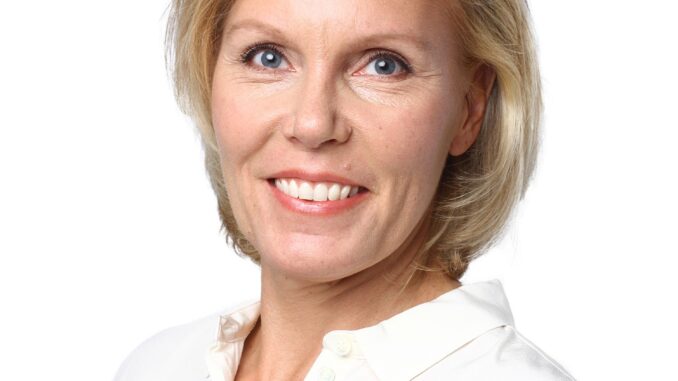
Featured in this week’s spotlight is Cecilia Nordén, Enterprise and Business Architect of IRM and Co-founder of Milky Way International.
Nordén helps businesses develop their strategies, offers to customers, mapping how those ideas affect the operations and how to create small continuous value creating changes, supported by an event driven architecture.
She has worked with everything from business development, management, start-ups, marketing, customer and partner relations to IT-development and financial monitoring.
Nordén is the author of “Vintergatan – din verksamhetskarta” (“The Milky Way – map, navigate and accelerate change”, available in English in October), a book about how to visualise what an enterprise does, what information it handles and in which IT-systems, into one combined map – A Milky Way map.
Interested in her perspective about being an architect, we reached out for thoughts on several key questions.
Question: How did you get your start in the industry?
Answer: After my MSc degree in engineering, I started off doing programming for a year and a half. Then I got hired by a Management Consultancy firm and started doing Business Architecture, even if it at the time was called Management Consulting or Business Development. In 2014 I got to hear about the Milky Way Method, pioneered by Annika Klyver at IRM and started using that method at the firm I was working at. It vastly changed the way we could communicate Architecture within the organization and use it for strategic questions. Not only traditional Business Architecture questions, but everything from new offers and business models to how our IT-applications then would be set up and communicate. Two years later I joined IRM and started writing about the Milky Way and my book got published in 2018. I started developing a tool for the Milky Way Method together with Thomas Larsson and we founded Milky Way International through which we offer the tool and Milky Way training for an international audience.
Q: What is your current responsibility and what is your typical day like?
A: As a senior consultant, I help organizations visualize their overall value flow using The Milky Way method. Showing what they do (what Business Capabilities they have), what IT-applications they use while doing this, what information that is communicated between different parts of the organization, and how they interact with their customers and partners. All this combined into one view – a Milky Way map. Usually, C-suite management have good understandings of some and different parts of an enterprise, but very seldom an understanding of the whole which help them make better decisions. This visualization is then exported to a database where we can add and connect other architecture artifacts to the Business Capabilities, as well as explanatory text, identified problems, budgets etc.
Then I help my clients create overlays on top of their map where their main problems occur, what ongoing change initiatives they have and where they should invest in change, giving the most effect in the smartest way given available recourses. Using the map as a foundation for how their operations work today, we can very quickly start to discuss different ways to solve their problems and choose the smartest way forward to meet their strategic goals. I also connect existing process, information models and IT models to the Business Capabilities in the database so the Business Capability owners can start to own their own architecture. A lot of my time is spent on teaching people how to create the map and then use it for all sorts of analyses and storytelling, so that the client masters the skillsets needed.
Q: What do you like most about your job?
A: That it is so versatile. I get to see so many different industries and help enterprises with both seeing the big picture as well as identifying underlaying problems where improvements will create the best effect, which includes going into really detailed descriptions.
I am also one out of two main teachers for the Certified Enterprise Architect training offered by DFK here in Sweden. It is great fun and a real privilege to teach Enterprise Architecture to 50 new students every year, and constantly learn new ways and update our course of what is new and best practice from our work with our clients.
Q: What trends in architecture are you looking out for the rest of 2023 and 2024?
A: The need for enterprise architecture at the strategic level, as more and more enterprises struggle with both end-of-life for their products/services as well as IT-applications, due to the rapid tech development. However, enterprise architecture is a verb and not something we with that role can manage on our own. It is rather something all employees need to know about and consider when making changes, so we need to “democratize architecture” to get the movement going. An important trend is thus how to create useful visualizations and stories around architecture so that more can both contribute and take responsibility for the architecture.
Q: What is one thing we can do to support or increase the women in architecture?
A: The most important thing we can do is to show how versatile, important, and fun enterprise architecture is and that this work is needed at strategic, operational, and tactical levels. While it’s important to focus on meritocracy in hiring and promotion, there are also some steps we can take to create a more inclusive environment that encourages diversity. Instead of specifically targeting women for promotion, we can create a culture that values diversity and provides equal opportunities for everyone to contribute their ideas and perspectives. This can include measures such as providing mentorship and training opportunities, promoting work-life balance, and actively seeking out and addressing unconscious biases. Ultimately, by creating an inclusive and supportive culture, we can help ensure that the best minds – regardless of gender – have the opportunity to excel in architecture.
